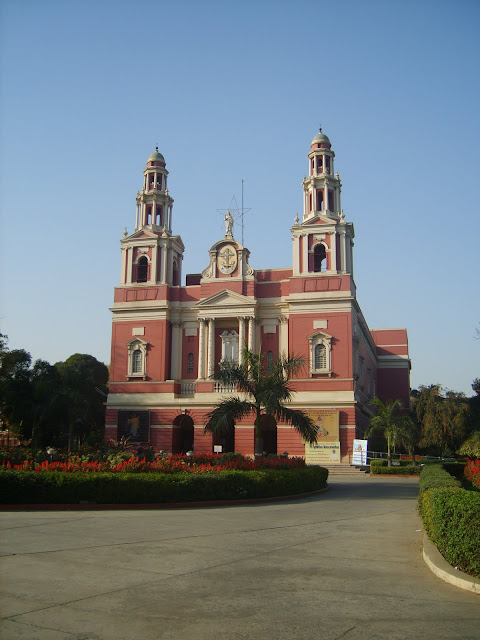India Gate had a whole crowd of visitors last evening. It appeared rather attractive after being illuminated in the colours of the Indian flag. In the morning it had a rather ghostly look about it in the fog even at ten o'clock when the Republic Day parade began. The Prime Minister laid a wreath in remembrance for those who laid their lives for the country in war.
If you go close to the India Gate you will notice that it is built of blocks of yellow sandstone. A closer look will reveal engraved on the stones the names of soldiers, their ranks and the names of their regiments. These were men who died in the First World War. India Gate is in fact a war memorial erected by the British in memory of soldiers and men of the British Indian Army who sacrificed their lives in that most horrendous of conflicts.
About 3 kilometres away is another war memorial raised in memory of soldiers belonging the princely states who too helped in the British war effort to "make the world safe for democracy". That memorial is known as Teen Murti, which lies at one end of Chanakyapuri or Delhi's diplomatic district. It consists of statues of three turbaned figures around a column on which are described the theatres of war in which the soldiers of the princely states of India took part.The place is better known as the residence of India's first Prime Minister Jawaharlal Nehru who live in a bungalow right next to it. That bungalow, by the way was the official residence of the British army chief in India. The entire complex is now a museum, planetarium and library.
In Dhaula Kuan, another 3 to 4 kilometres southwest of Teen Murti, I discovered another war memorial. It is dedicated to British soldiers and officers who died in the two World Wars. There are only gravestones with the names of the soldiers and the year they died engraved on them. This cemetary is maintained under the watchful eye of the Commonwealth War Graves Commission. Makes one think about what motivated these young men and some women to give up their lives so far away from home. Many of these British soldiers and officers are listed as 'Indian'. I wonder why.
Enough acrimony, I think, has been exchanged between the British and Indians over the former's rule over the subcontinent for two centuries. Somewhere the fates of those British who came to India as part of the ruling elite were intertwined with us Indians. We must therefore accept our common heritage sinking past differences. It is well over sixty years since they left in any case. Sufficient to make us forget.
Bill Dalton 10th Lancashire Fusiliers
Subscribe to:
Post Comments (Atom)
Church at Gol Dak Khana

serenity amid change

No comments:
Post a Comment